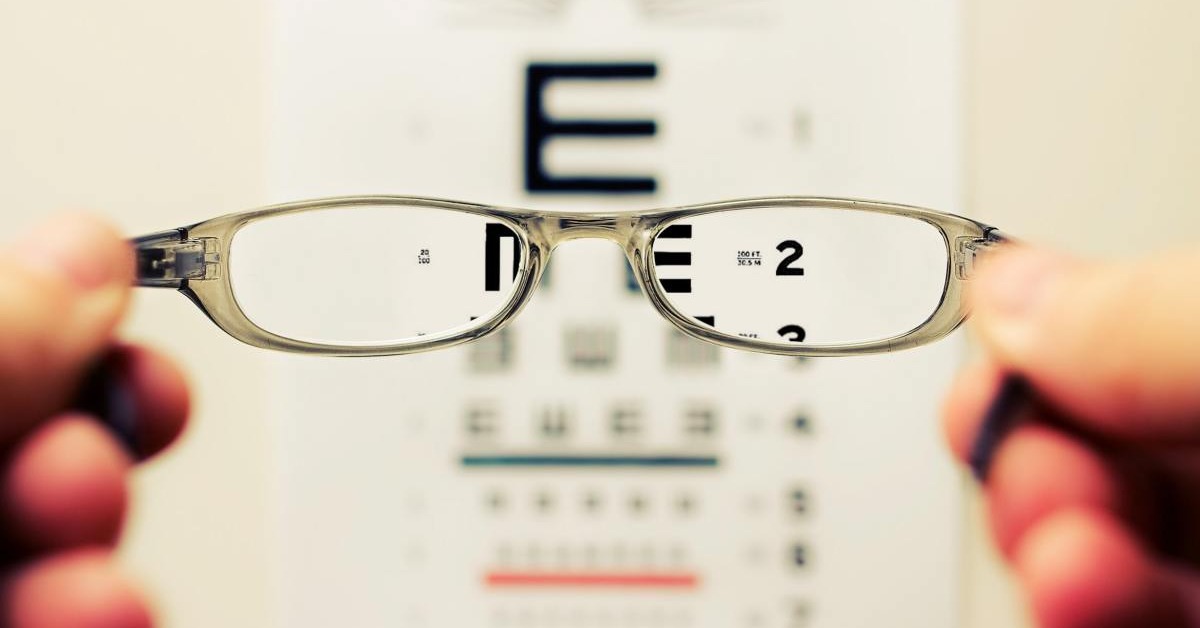
Why Become a Sports Vision Optometrist?
Sports vision optometrists work with patients at all levels, including [...]

With just 23 accredited Doctor of Optometry programs in the United States, it’s understandable that admission to schools of optometry is a competitive process. Not all programs are the same, however; some impose more selective criteria than others.
So, what can prospective students expect when applying to optometry programs? Baseline requirements include fulfilling prerequisite course requirements and providing official transcripts and letters of recommendation.
Additionally, optometry schools strongly recommend a four-year degree from an accredited institution. While some schools admit candidates pre-baccalaureate—New England College of Optometry (NECO) and the State University of New York (SUNY) College of Optometry allow applicants to skip their senior year of college if they have completed all required coursework—most applicants apply soon after earning their bachelor’s degree.
Some programs provide wiggle room in other admission criteria, such as recommending rather than requiring a minimum cumulative grade point average (GPA). Additionally, some schools—the University of California Berkeley‘s Herbert Wertheim School of Optometry & Vision Science is one—have designated standardized tests such as the Optometry Admission Test (OAT) or Graduate Record Examination (GRE) optional.
In short, admission requirements differ somewhat from program to program. This article will outline the most common admission requirements for Doctor of Optometry programs (OD programs) and answer the following questions:
Common admission criteria required by all accredited optometry programs include:
Programs vary around standardized test requirements, such as the Optometry Admission Test (OAT). While UC Berkeley waives this requirement, SUNY and NECO may accept alternative tests such as the GRE and, in some cases, the Medical College Admission Test (MCAT), Dental Admission Test (DAT), or Pharmacy College Admission Test (PCAT) in place of the OAT.
Admission requirements also differ regarding minimum cumulative grade point averages. For instance, SUNY does not have a minimum GPA requirement. Instead, they encourage prospective students to maintain a 3.2 or higher. On the other hand, UC Berkeley requires a 3.0 minimum GPA. All in all, prospective students should check admission requirements per school to meet the varying criteria.
All optometry schools require foundational undergraduate coursework to prepare students for more advanced, specialized coursework during optometry school. To meet these requirements, many prospective students earn bachelor’s degrees in pre-medical or science-related fields such as biology, chemistry, or physics. Optometry programs generally require the following courses:
Additionally, some programs require the following science courses with an accompanying lab:
Some schools offer exceptions by considering students with at least 90 qualifying credit hours with a grade of C or better from an accredited institution. Alternative options to satisfy the prerequisite coursework depend on the program, including whether the program accepts advanced placement (AP) credits, online credits, or classes competed at a community college.
Optometrists are essential healthcare providers who perform vision screenings and comprehensive eye exams. These practitioners examine, diagnose, treat, and manage ocular diseases such as glaucoma, cataracts, age-related macular degeneration, and other common eye disorders. Through comprehensive exams, they can also detect more severe health issues including diabetes, cancer, tumors, and other conditions. They provide referrals for specialized treatments or surgical procedures as appropriate.
With such an integral role in vision and eye care and overall health, optometrists must obtain a Doctor of Optometry (OD) degree from an accredited program. This four-year doctoral program combines advanced coursework with hands-on training through a supervised clinical experience. Aspiring optometrists can also opt to add a year-long residency following their studies to focus on a specialized area such as pediatric optometry, geriatric optometry, ocular diseases, vision therapy, and other concentrations.
The journey to earning your Doctor of Optometry involves time and dedication. However, the total time is not as lengthy as in other health professions, such as licensed nurse practitioners and surgeons. The process for optometrists takes roughly nine years, including four years of undergraduate studies, four years of optometry school, and an optional year to complete a residency program.
There is one expedited route to optometry. A few optometry schools (NECO and the Salus University Pennsylvania College of Optometry among them) offer accelerated OD degrees. Accelerated programs are more competitive and require extensive qualifications and experience, allowing candidates to complete the program in three years.
When applying to an accredited optometry program, the OptomCAS application portal allows applicants to submit one application package electronically to multiple schools. The application fee is $185 to create an account and apply to one school. An additional $75 charge accrues per school. The OptomCAS provides a seamless process for prospective students to submit the following documentation:
Additionally, some optometry programs may require a supplemental application and fee submitted directly through the school. It’s also worth noting that some aspects depend on the individual program, such as the recommendation letter requirements, minimum grade point average, prerequisite courses, type of standardized test (if required), and whether shadowing an optometrist is strongly recommended or required. Prospective students should research their preferred programs to ensure they meet any specific requirements.
Doctor of Optometry (O.D.) programs prepare tomorrow’s eye care specialists. This role requires many skills, including critical thinking, complex problem-solving, judgment and decision-making, and active learning. Optometry schools provide comprehensive classroom instruction, applied practice, and clinical rotations to equip aspiring optometrists with the tools for success.
Course titles may include:
The typical roadmap for a four-year Doctor of Optometry program includes the fundamentals, advanced understanding, patient care and management, and clinical experience.
The first two years focus on advanced instruction on foundational elements of optometry. During this time, students also build skills for working with patients in preparation for their supervised clinical practice. The third year puts the knowledge and skills learned during the first two years into practice through hands-on clinical experience. Year three also incorporates more advanced courses and electives to focus on a concentration within optometry and prepare you for the board exam.
Finally, the last year of optometry school contains four full-time clinical rotations for students to experience varied clinical environments, such as primary care, advanced care, specialty care, and an elective focus area.
Once you earn your Doctor of Optometry (OD) upon completing your classroom coursework, clinical training, and clinical rotations, you’ll need to sit for your National Board of Examiners in Optometry (NBEO) exam. This examination contains three parts that assess the following:
After successfully passing your board exam, you’ll officially become licensed to practice optometry. However, additional licensure varies by state. Furthermore, you’ll need to renew your license every two years, so continuing education is critical to remain in practice.
Of the 23 accredited optometry schools and colleges, no program currently provides an online or hybrid option. However, the New England College of Optometry (NECO) is on track to becoming the first accredited optometry program to offer a hybrid OD degree. Students will undertake coursework remotely online and complete rotations and other in-person program elements locally.
Currently, NECO enrolls roughly 150 students per year on-campus in Boston. The school’s goal is to add 55 more students per year through a hybrid model, starting with 25 students in the fall of 2023, then an additional ten students per year.
In the meantime, aspiring optometrists can begin preparation for optometry school by reviewing the admission requirements, such as prerequisite courses, minimum cumulative GPA, and types of recommendation letters and standardized tests accepted. Prospective students can also prepare their statement of interest and shadow an optometrist to gain insight into the profession before applying to optometry school.
It’s a competitive and selective process for entry into optometry school. Therefore, preparing in advance is critical to getting into your preferred program in your quest to earn your license in optometry.
.
Questions or feedback? Email editor@noodle.com

Sports vision optometrists work with patients at all levels, including [...]

Future health professionals considering the field of eyecare may well [...]

American students can choose from among 24 accredited Doctor of [...]

Cornea and contact lens optometrists are highly educated practitioners; they [...]

Roughly one in four optometry students pursue a residency after [...]
Categorized as: Optometry, Nursing & Healthcare